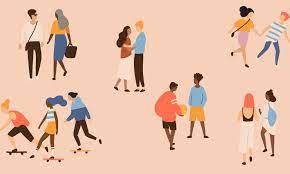
As a parent, teacher, or case worker it is important to articulate a behavior and discipline philosophy that empowers both the child, and the adult who must manage behavior. The thoughts below are brought on by research and experience. Going further and learning more about the why of behavior for each individual child is where the real work and the real rewards come to play.
Discipline is the practice of training someone to behave in accordance with rules or a code of behavior. Punishment is to inflict suffering or penalty after an offence is committed. These two ways of dealing with behavior are extremely different. When dealing with adolescents, it is essential to understand the importance of the first, and the harmfulness of the second.

Training a student to behave is about understanding the motivations of the behavior; only then, can techniques be implemented that actually work. After studying student behavior, Rudolf Dreikurs discovered that children put themselves in 4 mistaken goals of behavior: to gain attention, to gain power or control, to gain revenge, or to display feelings of inadequacy. Once adults understand the motivation behind the behavior; we can use positive techniques to help the student get what he/she needs while following the codes set by the school, the home, or societal placement.

As stated above, behavior is goal oriented; and a student’s primary goal is to belong and be significant. Through cooperation-based approach established on respect and learned responsibility, the adult can successfully teach the Rs of recovery. They are recognize I made a mistake, reconcile by apologizing, and resolve by working together on a solution.

On the flip side, punishment evokes fear, which in turn has the flight or fight response. In terms of student behavior that means arguing, physical altercations, leaving the scene, or covering up wrongdoing. In the end, conduct does not change because the needs were not met.

A healthy home or classroom includes the following: utilizing positive supports, fluid daily agendas, positive acknowledgement, creating positive metaphors, relevant lessons, and relational problem solving.

Relationships are the key and knowing that everyone can be a success story when given the appropriate tools and chance is the hope that brings positive change.
Books to read for yourself: Positive Discipline by Jane Nelson and Why Do They Act That Way? By David Walsh PH.D.
Books to read to the kids: Berenstain Bears series and Frances the Badger series.
